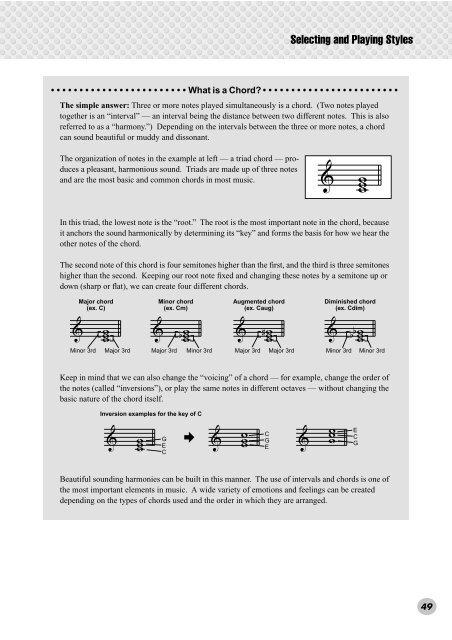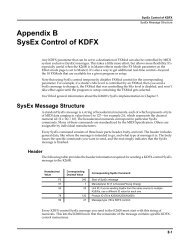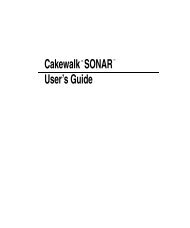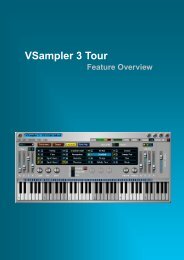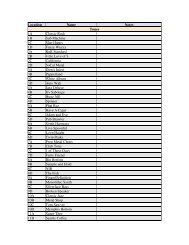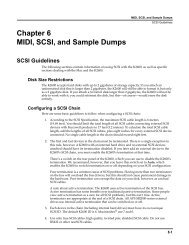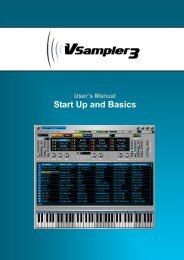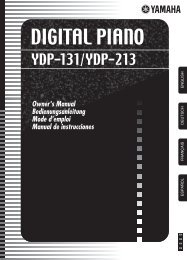2 Change the value. - MIDI Manuals
2 Change the value. - MIDI Manuals
2 Change the value. - MIDI Manuals
Create successful ePaper yourself
Turn your PDF publications into a flip-book with our unique Google optimized e-Paper software.
Selecting and Playing Styles• • • • • • • • • • • • • • • • • • • • • • • • What is a Chord? • • • • • • • • • • • • • • • • • • • • • • • •The simple answer: Three or more notes played simultaneously is a chord. (Two notes playedtoge<strong>the</strong>r is an “interval” — an interval being <strong>the</strong> distance between two different notes. This is alsoreferred to as a “harmony.”) Depending on <strong>the</strong> intervals between <strong>the</strong> three or more notes, a chordcan sound beautiful or muddy and dissonant.The organization of notes in <strong>the</strong> example at left — a triad chord — producesa pleasant, harmonious sound. Triads are made up of three notesand are <strong>the</strong> most basic and common chords in most music.In this triad, <strong>the</strong> lowest note is <strong>the</strong> “root.” The root is <strong>the</strong> most important note in <strong>the</strong> chord, becauseit anchors <strong>the</strong> sound harmonically by determining its “key” and forms <strong>the</strong> basis for how we hear <strong>the</strong>o<strong>the</strong>r notes of <strong>the</strong> chord.The second note of this chord is four semitones higher than <strong>the</strong> first, and <strong>the</strong> third is three semitoneshigher than <strong>the</strong> second. Keeping our root note fixed and changing <strong>the</strong>se notes by a semitone up ordown (sharp or flat), we can create four different chords.Major chord(ex. C)Minor chord(ex. Cm)Augmented chord(ex. Caug)Diminished chord(ex. Cdim)Minor 3rd Major 3rd Major 3rd Minor 3rd Major 3rd Major 3rd Minor 3rd Minor 3rdKeep in mind that we can also change <strong>the</strong> “voicing” of a chord — for example, change <strong>the</strong> order of<strong>the</strong> notes (called “inversions”), or play <strong>the</strong> same notes in different octaves — without changing <strong>the</strong>basic nature of <strong>the</strong> chord itself.Inversion examples for <strong>the</strong> key of CGECCGEECGBeautiful sounding harmonies can be built in this manner. The use of intervals and chords is one of<strong>the</strong> most important elements in music. A wide variety of emotions and feelings can be createddepending on <strong>the</strong> types of chords used and <strong>the</strong> order in which <strong>the</strong>y are arranged.49


